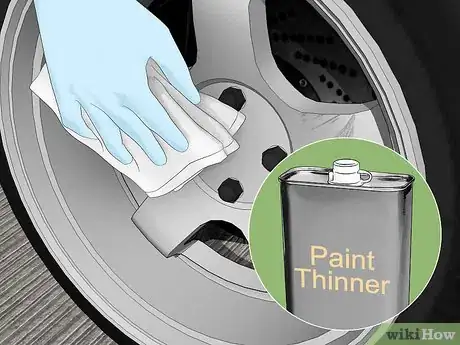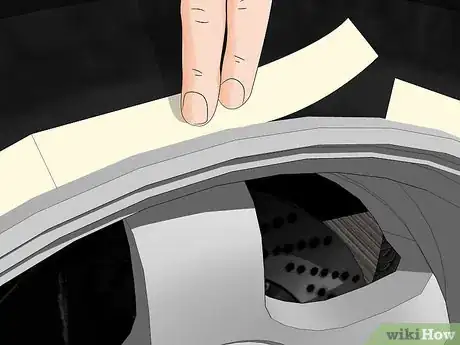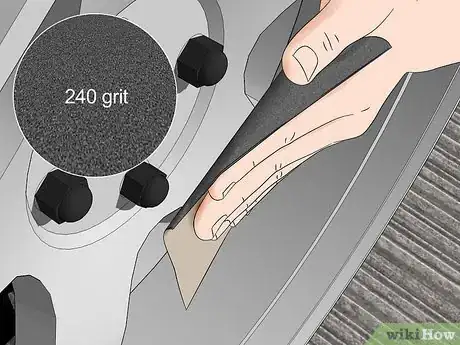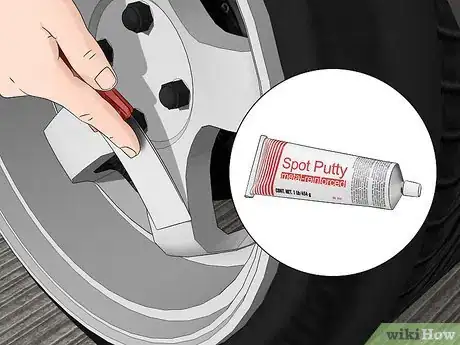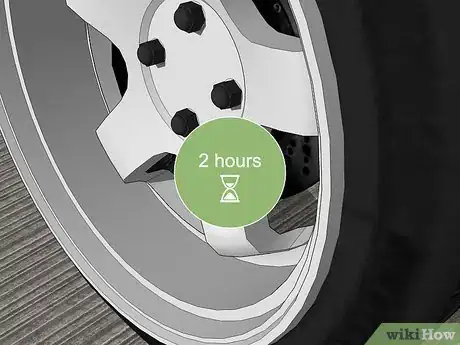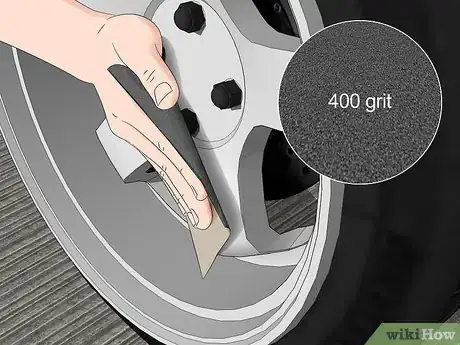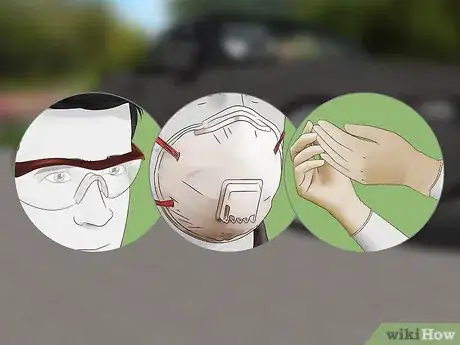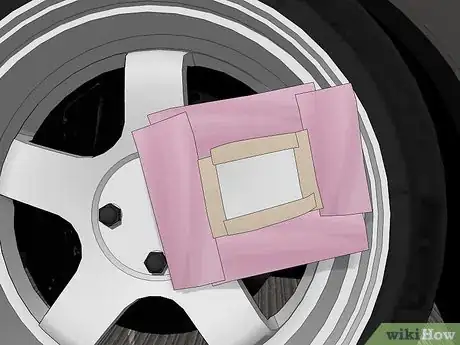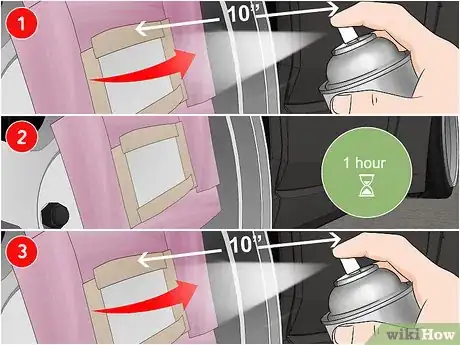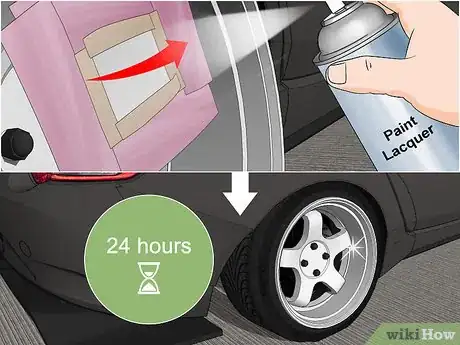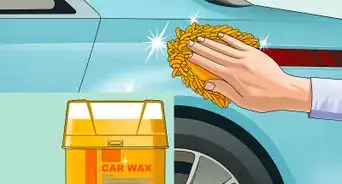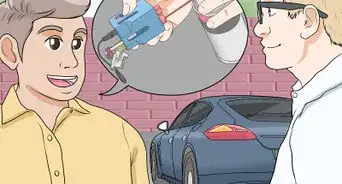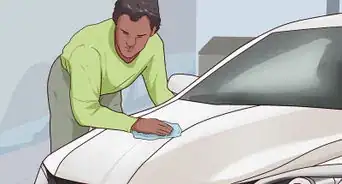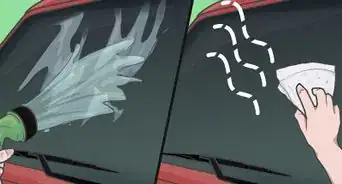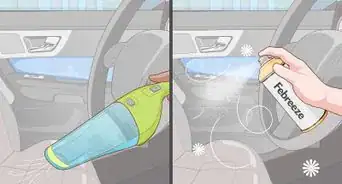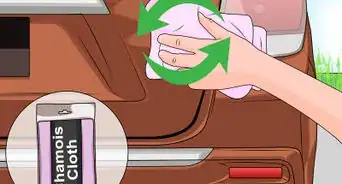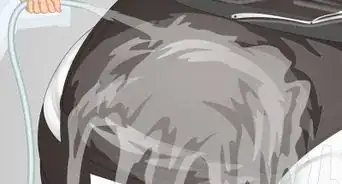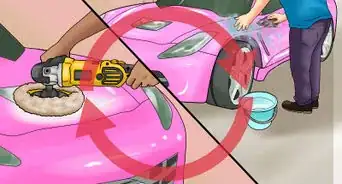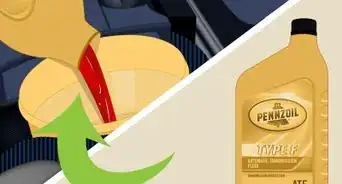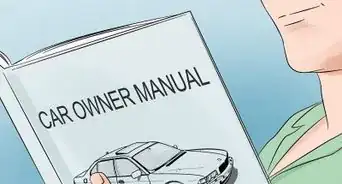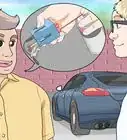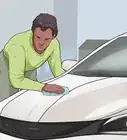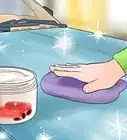This article was co-authored by Chad Zani. Chad Zani is the Director of Franchising at Detail Garage, an automotive detailing company with locations around the U.S. and Sweden. Chad is based in the Los Angeles, California area and uses his passion for auto detailing to teach others how to do so as he grows his company nationwide.
This article has been viewed 291,992 times.
Scratches or dents can make your alloy rims look dull. But as long as your alloy rim damage is mild, you can usually repair it yourself. Spend time cleaning your tires before you fix the damage so that any repairs you make are as permanent as possible. Then, sand, fill, and paint your alloy rims to restore their condition and keep them looking good.
Steps
Cleaning the Rim
-
1Inspect your rim for damage. To make your repairs last longer, you'll want to clean the rim thoroughly before you start. Check the rim for any scratches, dents, or other dings that you'll need to fix later on.[1]
-
2Use a mild cleaner and washcloth to get rid of excessive dirt. Spray a clean rag with wheel cleaner. Use it to scrub the rim and remove dirt and grime.[2]
- If your car's tires are especially dirty, you may need to clean them entirely before you fix the damage.
Advertisement -
3Clean the rim with paint thinner. Paint thinner will help get rid of any residual dust or debris left on the rim. Dip a washcloth in paint thinner and coat the rim lightly in paint thinner. Apply pressure as you rub the area until the dirt comes off.[3]
- Wear gloves and a respirator while handling paint thinner as a safety precaution.
-
4Dry the rim off with a lint-free cloth. Before you start fixing the rim damage, make sure your wheel is dry so your repairs will stick. Use a clean, lint-free cloth after you've cleaned the wheels or, if you have time, let the rim air-dry.
Sanding and Filling the Damage
-
1Cover the tire with masking tape. Apply masking tape to your tire behind the rim and 1–2 inches (2.5–5.1 cm) surrounding it As you sand the scratches away and apply paint to cover your repairs, this will keep anything from getting on your tires.
-
2Sand your scratches with 240-grit sandpaper. Rub any scratches and small dents with the sandpaper to smooth out any rough edges. Hold your sandpaper over the damaged area rub it back and forth across the surface. Continue sanding the rim's damage until the scratches or dents feel smooth instead of rough.[4]
- Wipe off any dust from the sandpaper with a dry cloth.
-
3Fill in scratches or dents with metal-reinforced spot putty. Lift a small amount of spot putty from its container with a putty knife. Apply the spot putty to the damaged area with pressure, spreading it around with the putty knife. This will help the putty fill in any scratches or dents as fully as possible. Use your fingers to shape the putty and smooth it over the damage to prevent raised areas on your rim.[5]
- Try to keep the spot putty within the damaged area, as applying it to flat, non-damaged areas can create unsightly bumps.
EXPERT TIPChad Zani is the Director of Franchising at Detail Garage, an automotive detailing company with locations around the U.S. and Sweden. Chad is based in the Los Angeles, California area and uses his passion for auto detailing to teach others how to do so as he grows his company nationwide.Auto Detailing Expert
 Chad Zani
Chad Zani
Auto Detailing ExpertAlternatively, try using metal polish to fix superficial scratches.
-
4Let the putty dry for up to 2 hours. How long the putty will take to dry depends on the brand as well as the size of the damage you're repairing. It should, however, take between 30 minutes to 2 hours. Read the putty's instructions carefully to determine how long you'll need to let it dry.
-
5Sand the putty down with 400-grit sandpaper for a smoother finish. Once the putty is completely dry, use 400-grit sandpaper to smooth out any remaining raised areas caused by the spot putty. Hold your sandpaper over the areas you filled with putty and rub it back and forth over the surface until the raised areas look level with the rest of the rim.[6]
Applying Primer and Paint
-
1Put on goggles, a respirator, and gloves before priming or painting. Spray paint and primer can cause skin, eye, and lung irritation. If you start to feel nauseated or lightheaded, leave the area immediately and contact Poison Control for further instructions.[7]
- Paint in a well-ventilated area to further avoid irritation.
-
2Mask your wheel with tape and kraft paper. Wrap your tire and any areas of the rim you won't be painting with kraft paper, and secure it down with masking tape to make it stick. Metallic spray paint can be tough to remove, so protecting as much of your wheel as possible will prevent accidental staining.[8]
- Only the damaged areas should remain uncovered, as you don't need to paint the entire rim.
-
3Spray a metal alloy primer over the damaged area. A primer will help the paint look more natural and allow it to stick to your rim better. Stand 6–8 inches (15–20 cm) away from the rim and spray the damaged area in sweeping motions. A single coat of primer is enough to help the spray paint stick evenly.[9]
-
4Let the primer dry for 30 minutes to an hour. Check the primer's instructions to see how long you'll need to let it dry before spraying the paint. In general, the time should range from 30 minutes to an hour. Do not spray paint until your coat of primer is completely dry.
-
5Apply a base coat of metallic spray paint to the damaged area. Choose a spray paint color that closely matches the alloy rim, which should be silver. Hold the spray paint can 10–12 inches (25–30 cm) away from the rim's surface and paint the area with a sweeping motion.
-
6Let the spray paint dry for 30-60 minutes. Waiting 30 minutes to an hour will help your coat look smooth. Avoid touching your spray paint as it dries to prevent smudging it.
- For exact drying times, consult your paint's instructions.
-
7Apply 2-3 additional spray paint coats. After your coat has finished drying, apply additional coats until you reach your desired color. In most cases, you will need to apply at least 2-3 coats for a natural-looking repair. Let each coat dry for 30-60 minutes before applying another one.
- Do not touch the paint between coats.
-
8Apply a spray lacquer to seal the paint job. Paint lacquers will keep your spray paint from scuffing or flaking away. Spray the lacquer in a light mist, similar to how you applied the spray paint, then let it dry. How long you let it dry depends on the lacquer but generally ranges from 8-24 hours.[10]EXPERT TIPChad Zani is the Director of Franchising at Detail Garage, an automotive detailing company with locations around the U.S. and Sweden. Chad is based in the Los Angeles, California area and uses his passion for auto detailing to teach others how to do so as he grows his company nationwide.Auto Detailing Expert

 Chad Zani
Chad Zani
Auto Detailing ExpertStill struggling to cover the scratch? If there's a deep scratch on your wheel, consider seeing a rim repair expert. They will professionally skim one or two millimeters off the wheel.
Community Q&A
-
QuestionMy mate's cattle dog always urinates on my mags on my Mazda MX5. Is the dog attracted to my polish smell?
 MadmedixCommunity AnswerPossibly. Try lightly spritzing clove oil (get the pet store variety, don't use the essential oil itself, as it will burn the dog's nose and anything else it touches). It's a natural bite deterrence used during training; and the dogs do not like it. A quick dab on the back corner of the centre console will stop them from trying to co-pilot the car too.
MadmedixCommunity AnswerPossibly. Try lightly spritzing clove oil (get the pet store variety, don't use the essential oil itself, as it will burn the dog's nose and anything else it touches). It's a natural bite deterrence used during training; and the dogs do not like it. A quick dab on the back corner of the centre console will stop them from trying to co-pilot the car too.
Warnings
- Work on your alloy rims in a well-ventilated area to avoid respiratory irritation from the cleaners and paints you use.⧼thumbs_response⧽
- If you don't have professional experience fixing cars, you may only be able to fix minor scratches or dents. For excessive damage, take your car to a body shop.[12]⧼thumbs_response⧽
Things You'll Need
- Mild cleaner or solvent
- Paint thinner
- Lint-free washcloth
- 240-grit sandpaper
- 400-grit sandpaper
- Masking tape
- Primer
- Lacquer
- Metal-reinforced spot putty
References
- ↑ http://www.caradvice.com.au/439365/what-to-do-when-you-damage-a-wheel/
- ↑ https://www.driving.co.uk/car-clinic/as-good-as-new-how-to-repair-alloy-wheel-damage/
- ↑ http://www.caradvice.com.au/439365/what-to-do-when-you-damage-a-wheel/
- ↑ http://www.caradvice.com.au/439365/what-to-do-when-you-damage-a-wheel/
- ↑ https://www.youtube.com/watch?v=9WQiqYlpxoY&feature=youtu.be&t=401
- ↑ http://www.caradvice.com.au/439365/what-to-do-when-you-damage-a-wheel/
- ↑ https://www.apartmenttherapy.com/how-to-spray-pa-141892
- ↑ http://www.caradvice.com.au/439365/what-to-do-when-you-damage-a-wheel/
- ↑ https://www.apartmenttherapy.com/how-to-spray-pa-141892
About This Article
If you want to fix scratches in an alloy rim, start by cleaning the rim thoroughly, then covering the 1 to 2 inches of tire above the rim with masking tape. Once the tape is in place, smooth out any scratches or dents with 240-grit sandpaper, making sure to wipe off any dust from the sandpaper with a dry cloth. Afterward, use a putty knife to spread a small amount of metal-reinforced spot putty onto the scratches and dents. Try using your fingers to shape the putty over the damage. Let the putty dry for about 2 hours, then sand it down with 400-grit sandpaper until the raised areas look level with the rest of the rim. For more help, like how to apply paint and primer to your rim, scroll down!


